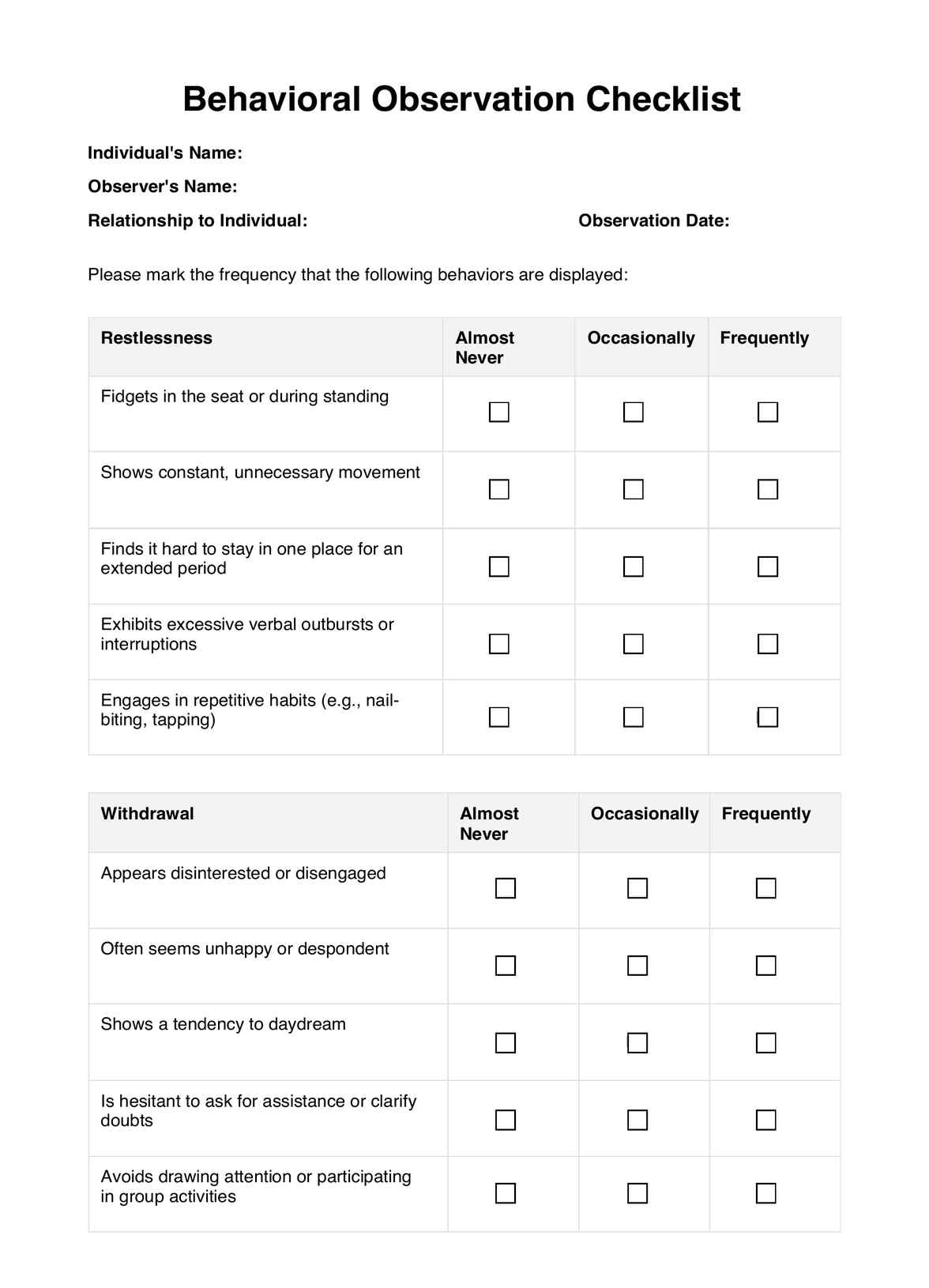Professionals in healthcare, education, and psychology mostly use Behavioral Checklists. This includes psychologists, psychiatrists, pediatricians, special education teachers, school counselors, and behavior analysts. They are also utilized by researchers studying behavior patterns and interventions.

Behavioral Checklists
Dive into the world of Behavioral Checklists: their purpose, how to use them, and their benefits. Unlock insights with our free PDF sample download.
Behavioral Checklists Template
Commonly asked questions
Behavioral Checklists document and assess specific behaviors, identifying patterns or areas of concern. They serve as a tool in diagnosis, treatment planning, and monitoring progress over time. In educational settings, they assist in developing individualized education plans (IEPs) and behavioral interventions. In healthcare, they contribute to diagnosing mental health conditions, adjusting treatment plans, and understanding behavior as it relates to physical health.
A Behavioral Checklist can help a person by providing objective data on their behaviors, leading to accurate diagnoses and tailored interventions. It aids in recognizing problematic behaviors and understanding the triggers and outcomes associated with these behaviors. This, in turn, facilitates targeted support, improves coping strategies, and enhances overall well-being.
EHR and practice management software
Get started for free
*No credit card required
Free
$0/usd
Unlimited clients
Telehealth
1GB of storage
Client portal text
Automated billing and online payments











